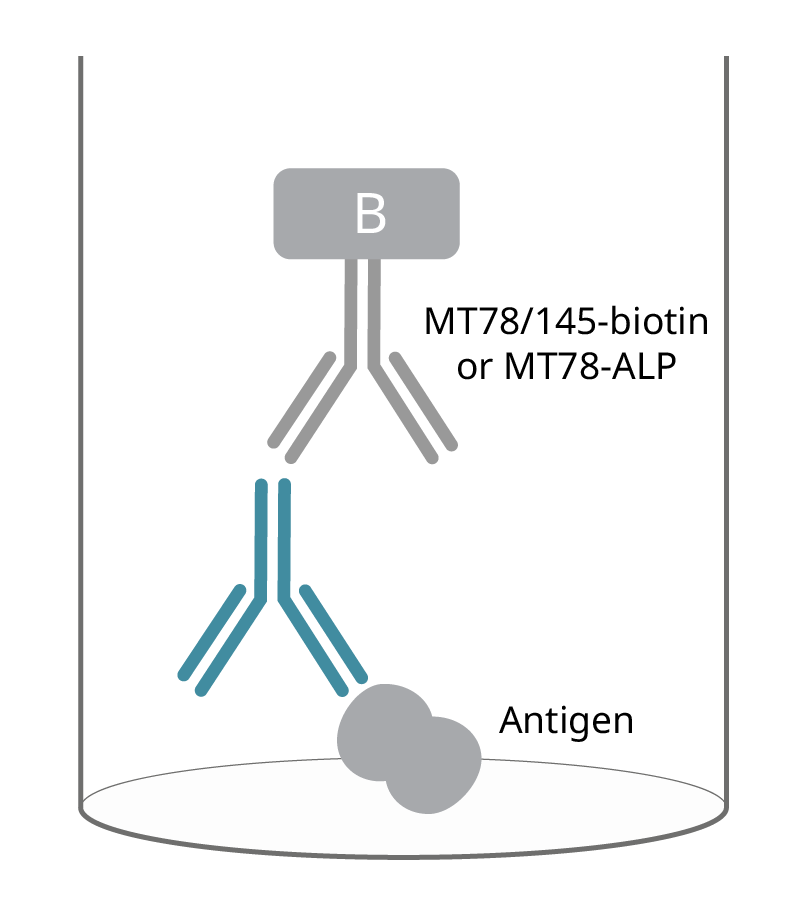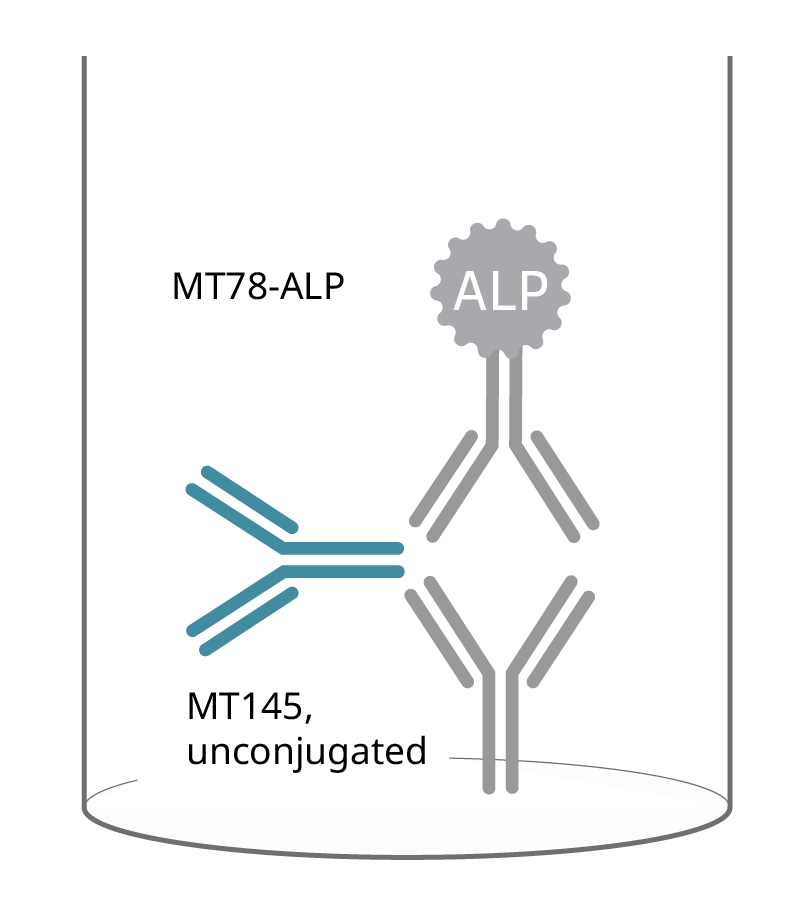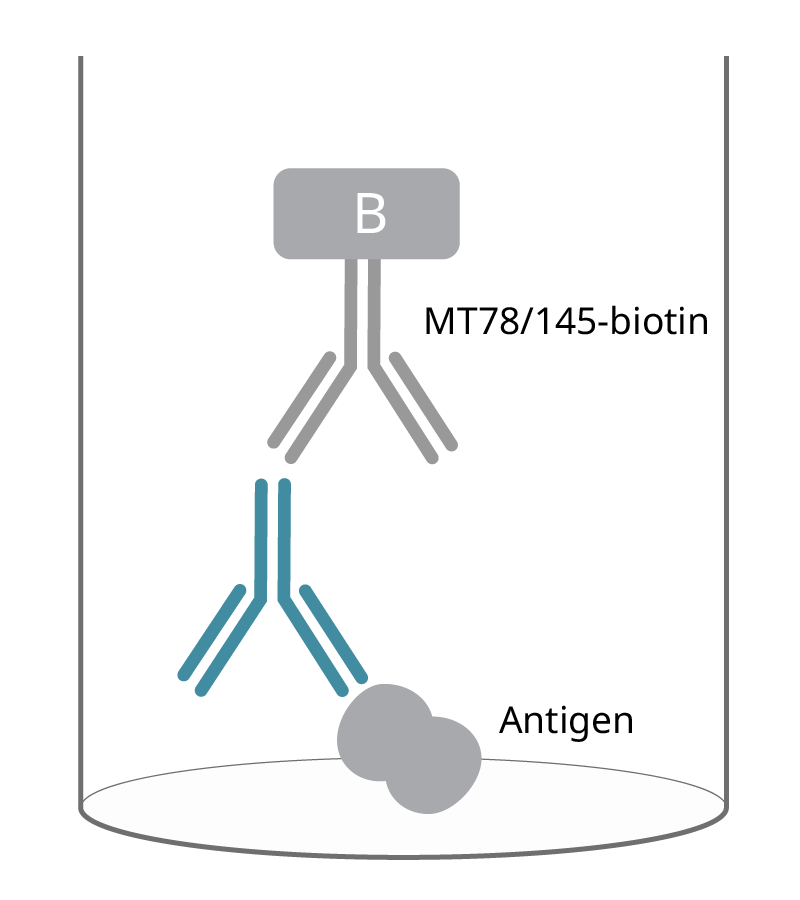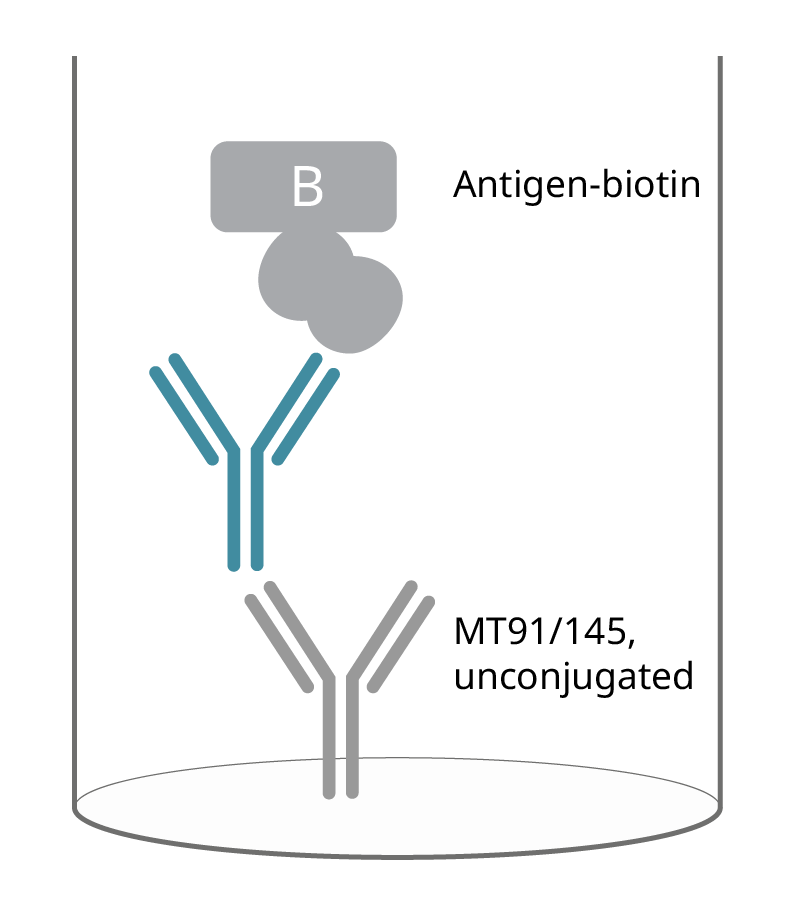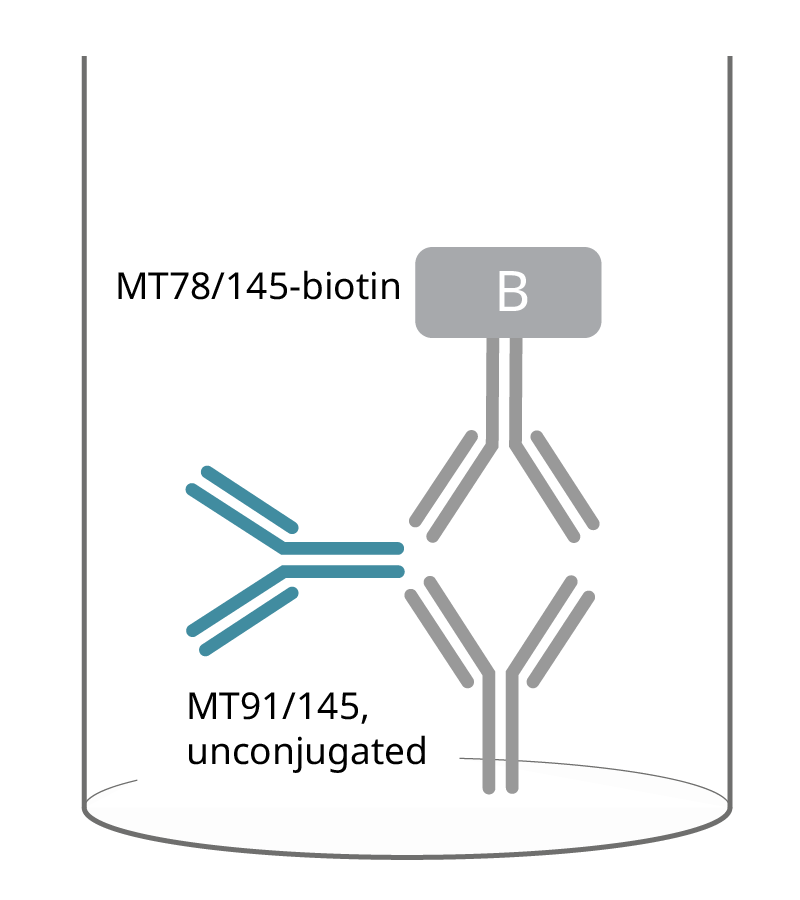Learn how to combine Mabtech’s antibodies for human IgG ELISA and ELISpot. Adjust the setup to detect either total IgG or antigen-specific IgG. Different antibody combinations of monoclonal antibodies have been selected for the detection of the human IgG subclasses in ELISA and ELISpot. There is no cross-reactivity to human IgA1, IgA2, IgM, and IgE.
Application guide: ELISA
The human IgG ELISA can be adapted to detect antigen-specific IgG or the total IgG in serum or plasma samples.
Antigen-specific IgG
Capture: Antigen
Detection mAbs: MT78/145, biotin or MT78, ALP
Total IgG
Capture mAb: MT145, unconjugated
Detection mAb: MT78, ALP
Application guide: ELISpot
The human IgG ELISpot and FluoroSpot can be adapted to detect antigen-specific IgG-secreting cells or the total IgG-secreting cells in cell samples like PBMCs.
Antigen-specific IgG
Capture:
Antigen
Detection mAbs:
MT78/145, biotin
Capture mAbs:
MT91/145, unconjugated
Detection:
Antigen-biotin
Total IgG
Capture mAbs:
MT91/145, unconjugated
Detection mAbs:
MT78/145, biotin
Get inspired!
Make sure to check out how researchers have used Mabtech's human IgG ELISA, ELISpot, and FluoroSpot kits in everything from vaccine development to SARS-CoV-2 research. You can find it all in our Publication database!

